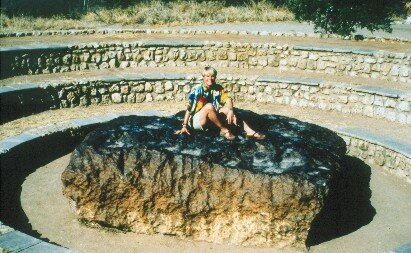|
|
 |
|---|---|
|
The Meteorite That Made The Crater |
|
| Different types of meteorites have different chemical characteristics, especially in respect of the concentrations and ratios of siderophile elements (elements that tend to be associated with iron). Examples of such elements are cobalt and nickel; other elements that occur strongly enriched in meteorites compared to crustal rocks on earth are iridium and chromium. Meteorites have much higher concentrations of these elements than crustal rocks on Earth. A large number of chemical analyses of rocks form the surrounding countryside and drill core samples from Tswaing was carried out by the Department of Geology at the University of the Witwatersrand. Analysis for trace elements, i e elements occurring in small amounts, was done by Christian Koeberl at the University of Vienna. It was established that the breccia, and more specifically the glass and melt fragments in this layer, are strongly enriched in siderophile elements in comparison with the countryside rock types. This means that traces of the meteorite projectile had been identified. It was not possible to determine conclusively what kind of meteorite caused the crater, but at least it was determined that it was a type of stony meteorite known as a chondrite, named after the Greek word for seed, because chondrites are full of little seed-like, round particles formed as melt droplets - the chondrules. |
|
| (Source:REIMOLD, W U, BRANDT, D, DE JONG, R C, HANCOX, J, 1999, Tswaing Meteorite Crater. An introduction to the natural and cultural history of the Tswaing region including a description of the hiking trail. Popular Geoscience Series 1. Pretoria: Council for Geoscience. Available at the Council for Geoscience, Pretoria, South Africa) | |
|
All intellectual property rights, including but not limited to copyright and trademarks, vested in the material contained on the NFI website is held by the NFI and may not be copied, reproduced, adapted, published or distributed in any form whatsoever without the prior written consent of the responsible person at the NFI. |
|
